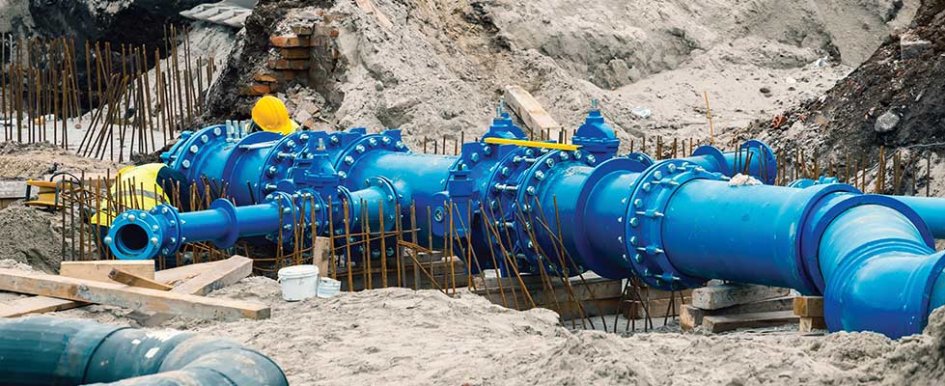
For today’s construction businesses, it isn’t always enough to complete projects on time and within budgetary parameters. There are also sustainability goals to consider — including anything from the use of low-carbon materials to energy-efficient designs. Achieving these goals can be important not just for meeting client expectations, but also for building a reputation for social responsibility and ecological stewardship.
Given the complexity of construction projects, builders must use every tool at their disposal to ensure those sustainability goals are met — and one tool that’s increasingly essential is intelligent water management, including detection of leaks and waste.
More Than Just Damage Control
Water management is rapidly becoming essential to construction projects and throughout a building’s operational life. Leak detection is the most important aspect of water management due to the growing focus from insurers, developers and contractors on the prevention of water damage. Yet there’s more to effective water management than just leak prevention, and leading solutions offer significant sustainability capabilities, providing a path to achieve conservation goals.
More than 25% of the water that enters a building or construction sites goes to waste — a troubling amount of excess for teams where conservation, sustainability and cost reduction are important. Smart water management systems reduce this inefficiency by identifying issues and waste that would otherwise remain invisible. Simply put, water intelligence solutions provide early identification of stubborn leaks, illuminating those areas where repairs are needed to prevent further waste.
Effective solutions help prevent water loss, but that’s only one of their environmental advantages. Because every cubic meter of water wasted creates approximately 10.6 kilograms in carbon emissions, preventing waste can lower the project’s overall carbon footprint — and move the entire team closer to achieving its broader environmental goals.
How Intelligent Water Management Works
How does this technology work, exactly? Think of it as a digital watchdog for building- or site-wide water systems. These devices use artificial intelligence (AI) and real-time data to monitor water flow, identify unusual usage patterns and send an instant alert when something is amiss — whether that’s a ruptured pipe or malfunctioning plumbing appliances. The system can also shut off valves automatically to prevent water damage with quick, human-free intervention.
The benefits are obvious — real-time anomaly detection and auto shut-off stop leaks as soon as they start, averting property damage and surprise utility bills. During construction, smart leak detection can notify the project team and prevent leaks during the night and at off-hours, when they have the potential for maximal damage.
Water Intelligence Offers Wide-Ranging Benefits
Again, it’s important to think about the benefits of water intelligence solutions beyond mere water loss. While conserving water is important for any building and construction project, the ecological benefits also extend into the project’s overall carbon footprint.
Here’s why: Every drop of water wasted has a hidden carbon cost — including the emissions created from pumping, treatment and wastewater processing. Simply put, it takes a lot of energy to provide buildings with running water, and expending that energy is bound to have some unwanted effects on the atmosphere — but minimizing wasted water can keep these unwanted effects in check.
For frame of reference, consider that, within the span of a year, a single running toilet can generate as much carbon dioxide as one passenger car. And while a single toilet probably won’t run for a whole year, it is very common to see buildings where multiple toilets occasionally run, with more than one on average per year. Preventing even this seemingly innocent issue can bring a building much closer to carbon neutrality.
Additionally, water intelligence reduces reliance on desalination and other systems that have significant energy investments. Meanwhile, potent greenhouse gases like methane and nitrous oxide are inevitable byproducts of the sewage treatment process — but minimizing wasted water can help here, too.
For projects working toward Leadership in Energy and Environmental Design (LEED) certification, smart leak detection provides a direct contribution to key credit categories. The Water Efficiency (WE) credit category rewards reduced potable water use through efficient fixtures and systems. Advanced water management and leak detection tools can significantly increase the number of LEED credits and raise its certification level.
There are also financial benefits to think of. Leaks don’t just waste water; they also raise utility bills, delay construction timelines and incur regulatory infractions. In short, they inflate the costs of constructing or maintaining a building.
Water intelligence solutions control these costs by identifying problems early on — helping projects stay on schedule and meet sustainability targets.
Not All Water Management Tools Are Created Equal
For building teams looking to embrace water management and leak detection, it’s critical to exercise discernment, choosing the right technology for the application at hand.
The most basic solutions are leak detectors, which are essentially sensors. When water touches one, a short-circuit is caused and the system sends an alert. These simple solutions are effective for certain simple tasks but cannot provide the insights needed to reduce waste, and they are often plagued by false alerts.
Inline, AI-based systems offer a more robust solution. These systems learn normal water flows and use AI to detect waste and leaks, and to react by alerting, shutting water off and providing insights to reduce waste.
Additionally, keep in mind that some water management solutions are designed for small-scale facilities and projects. A solution designed for residential homes will most likely be unfit for use on bigger sites, and building teams will likely want something that’s been proven effective for more expansive facilities featuring complex plumbing infrastructure.
Water intelligence technology like this can be a major asset for preventing water damage, promoting conservation and mitigating waste — ultimately bringing a construction project into alignment with major sustainability goals or green credentials while eliminating the pain of water leaks and damage.
